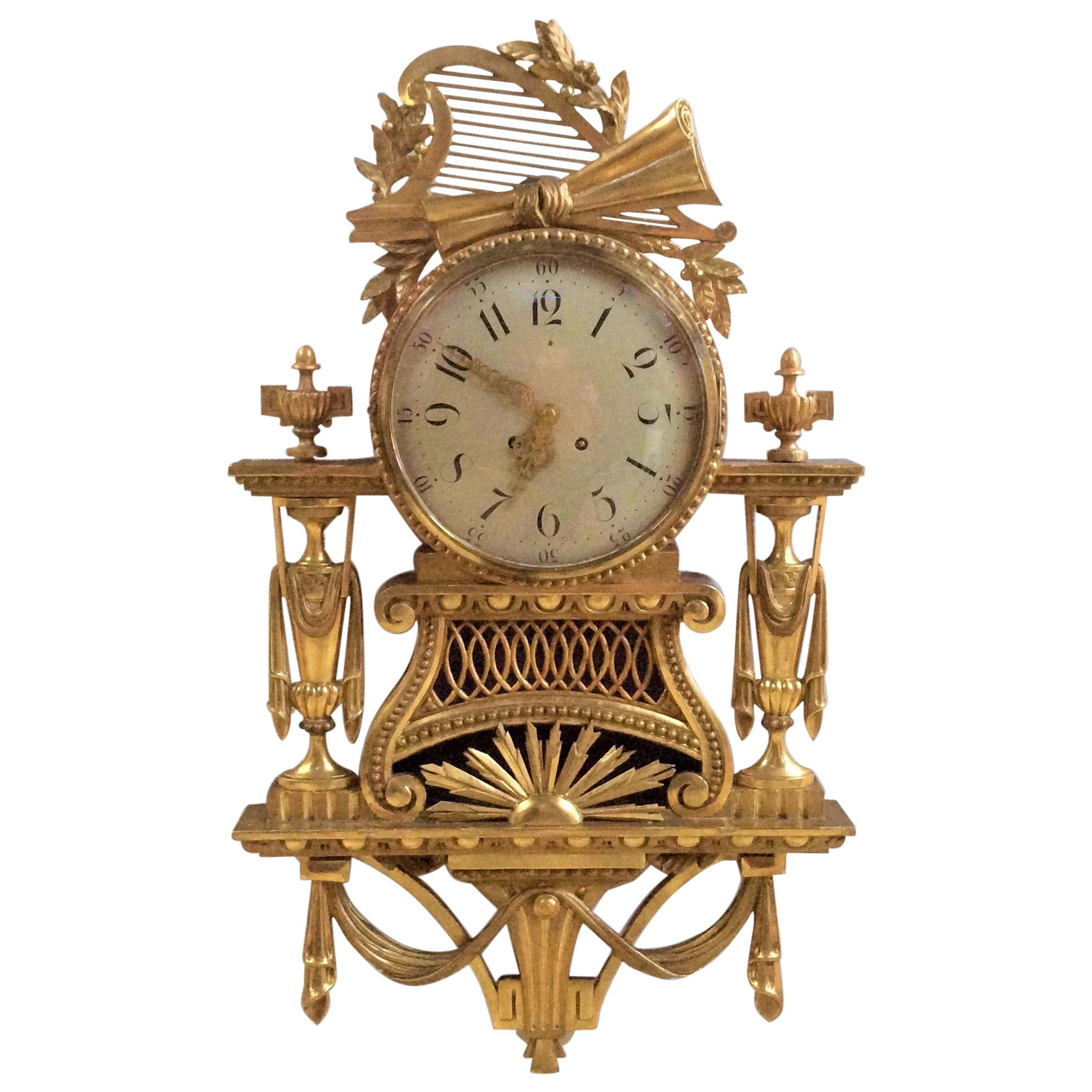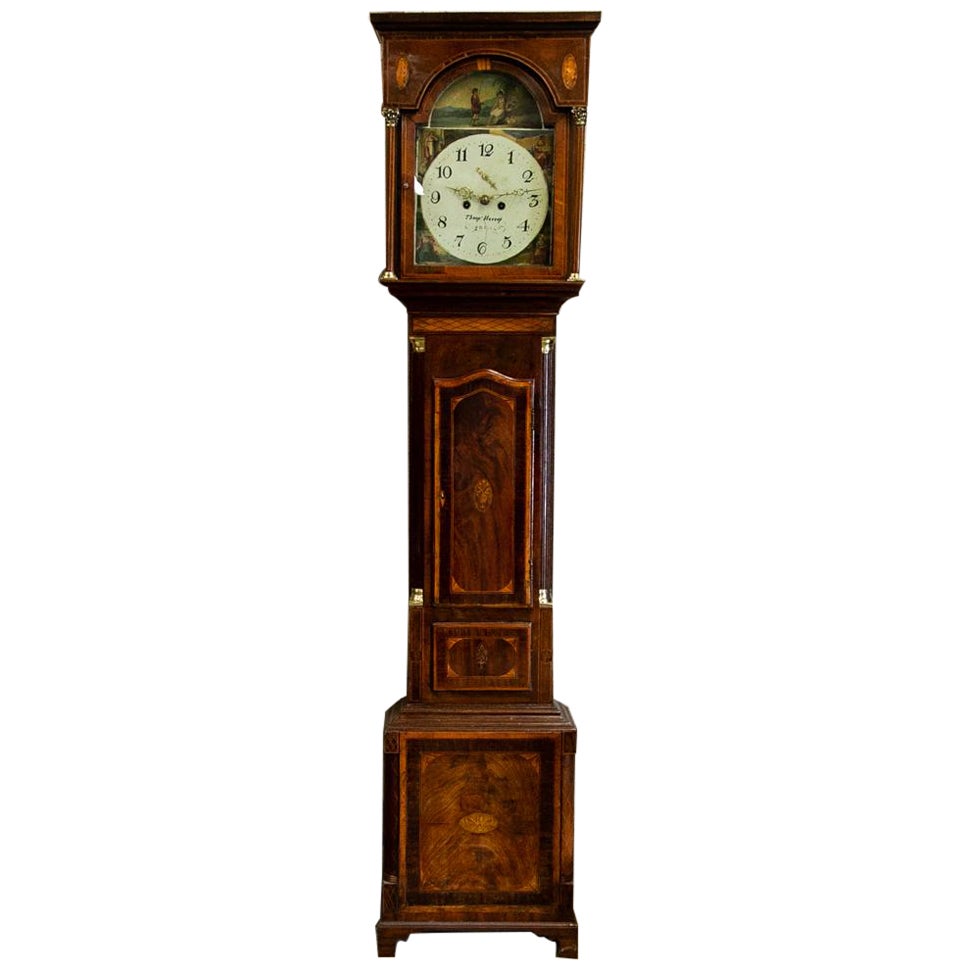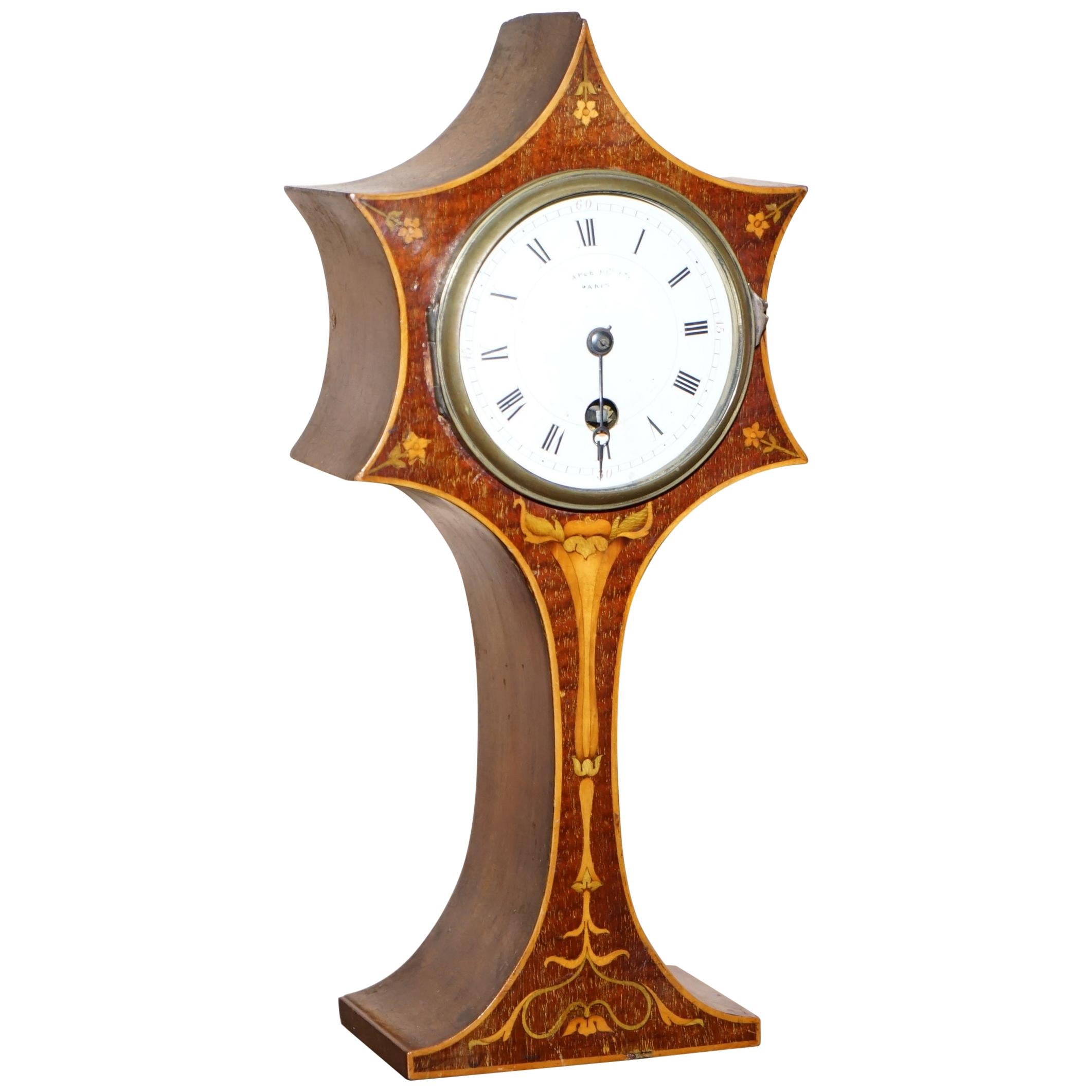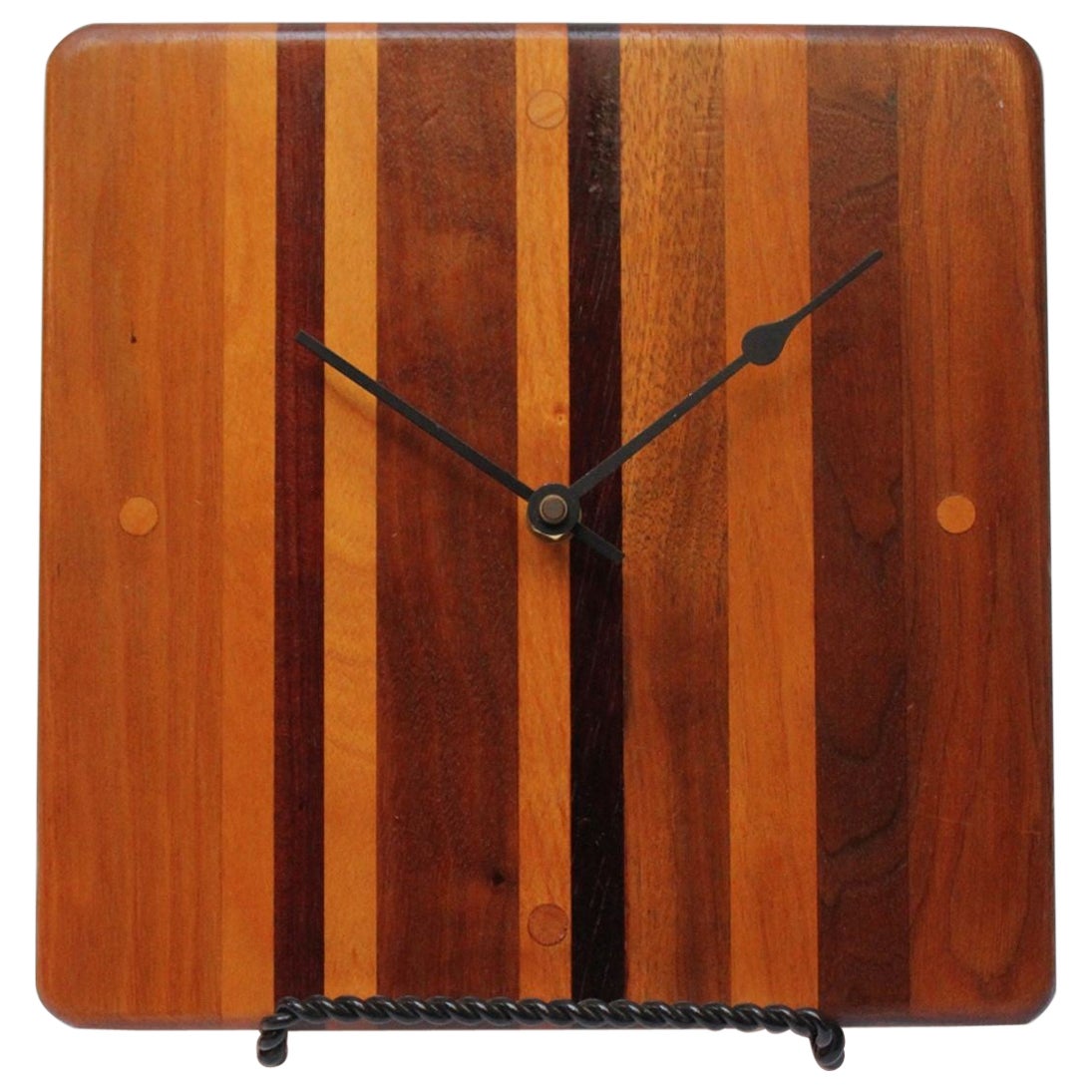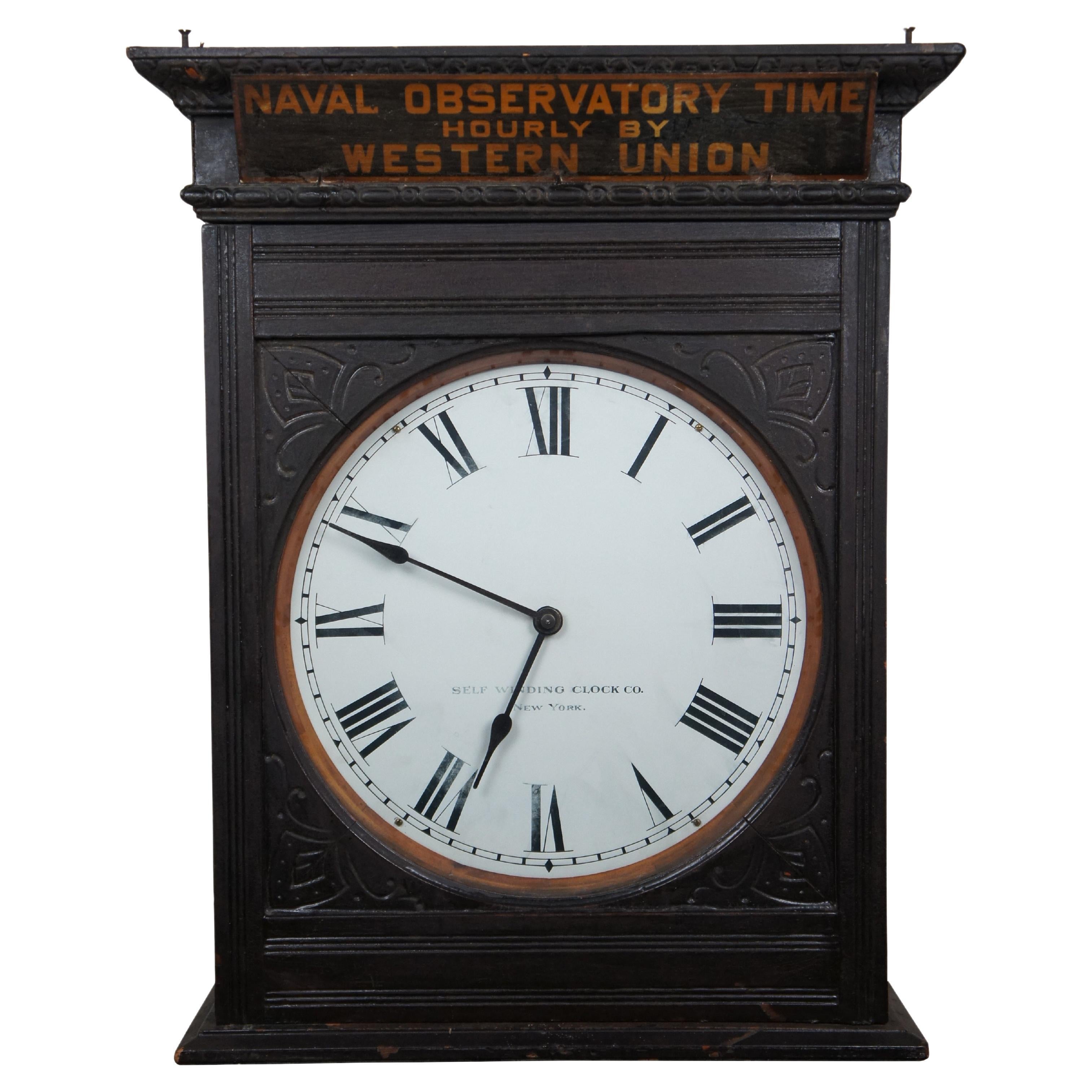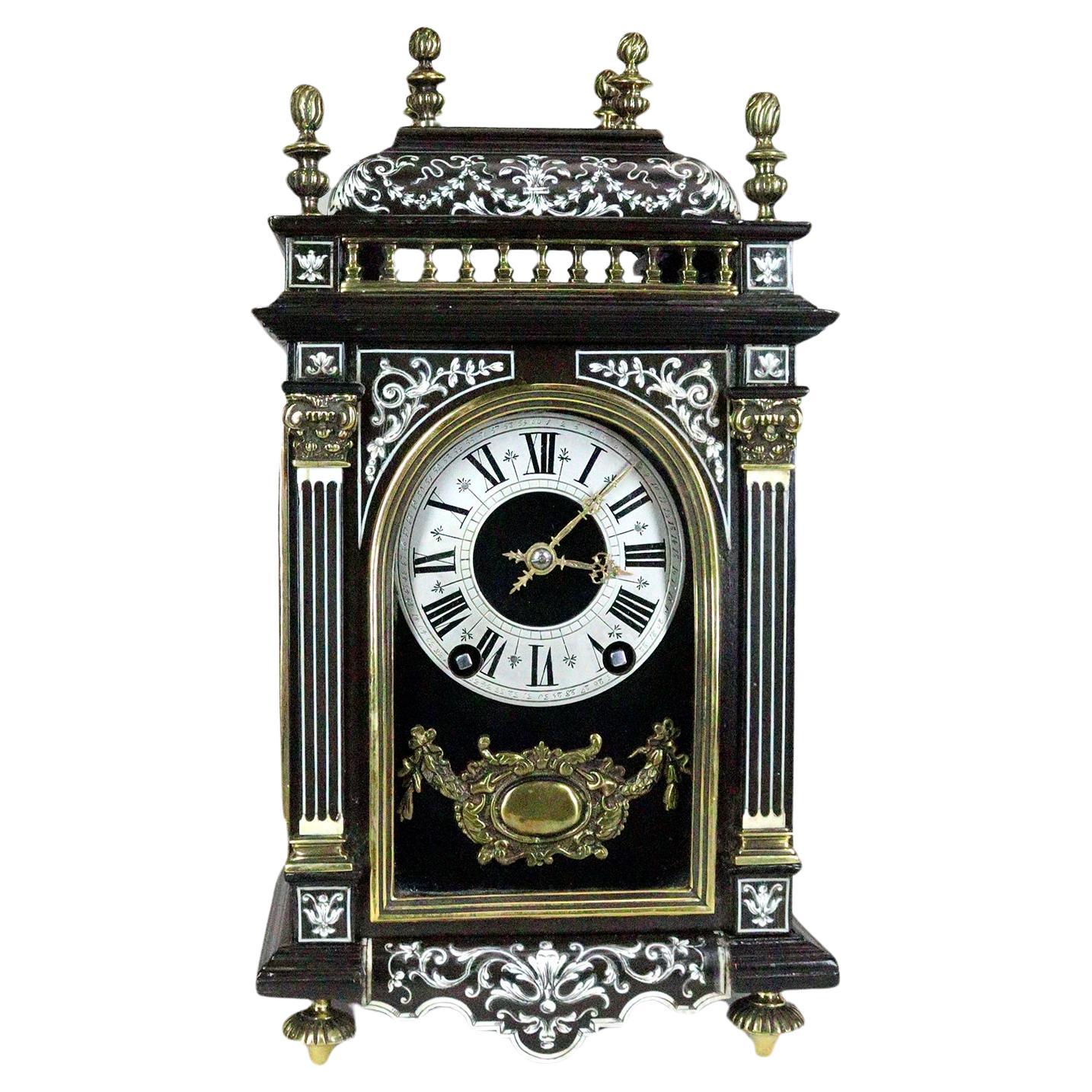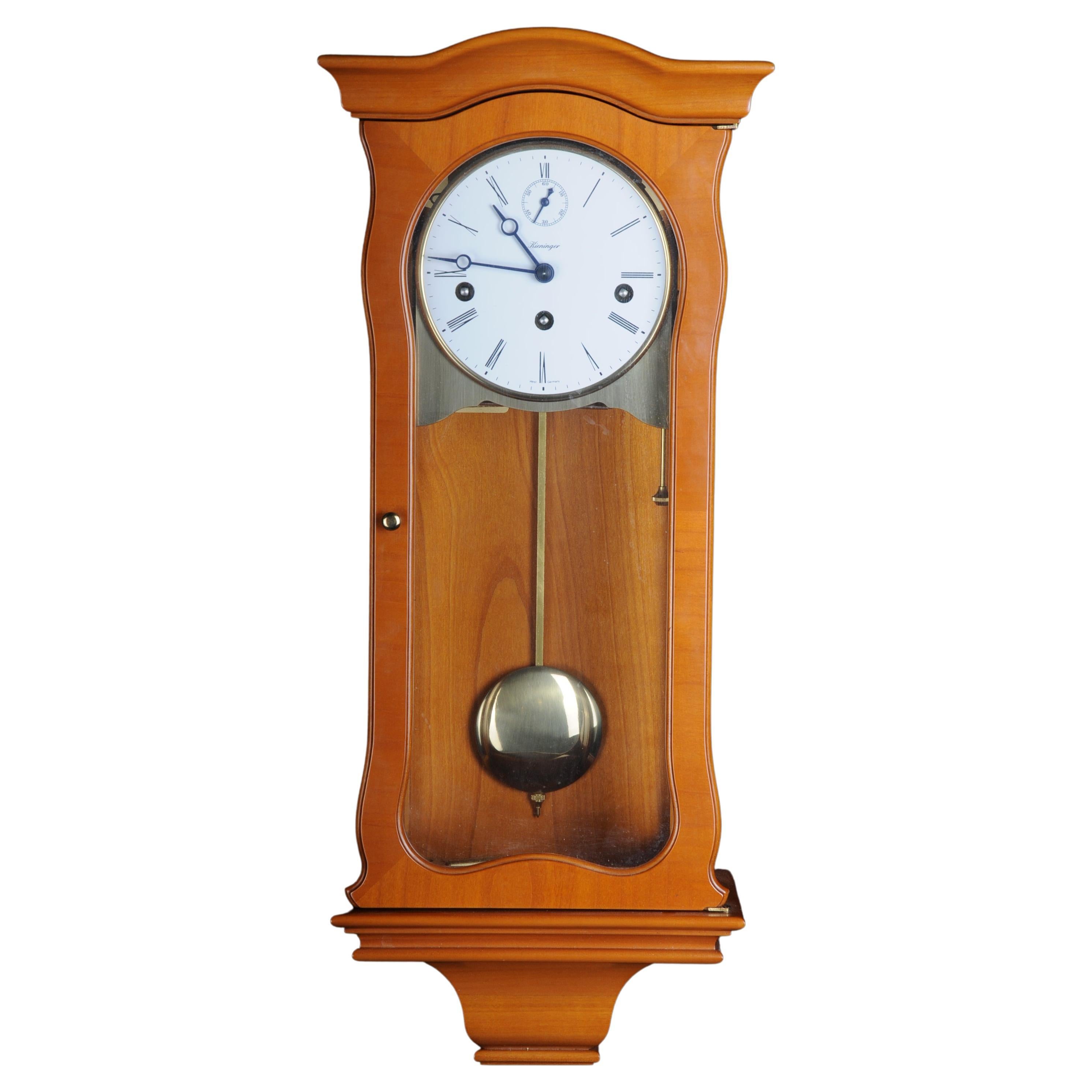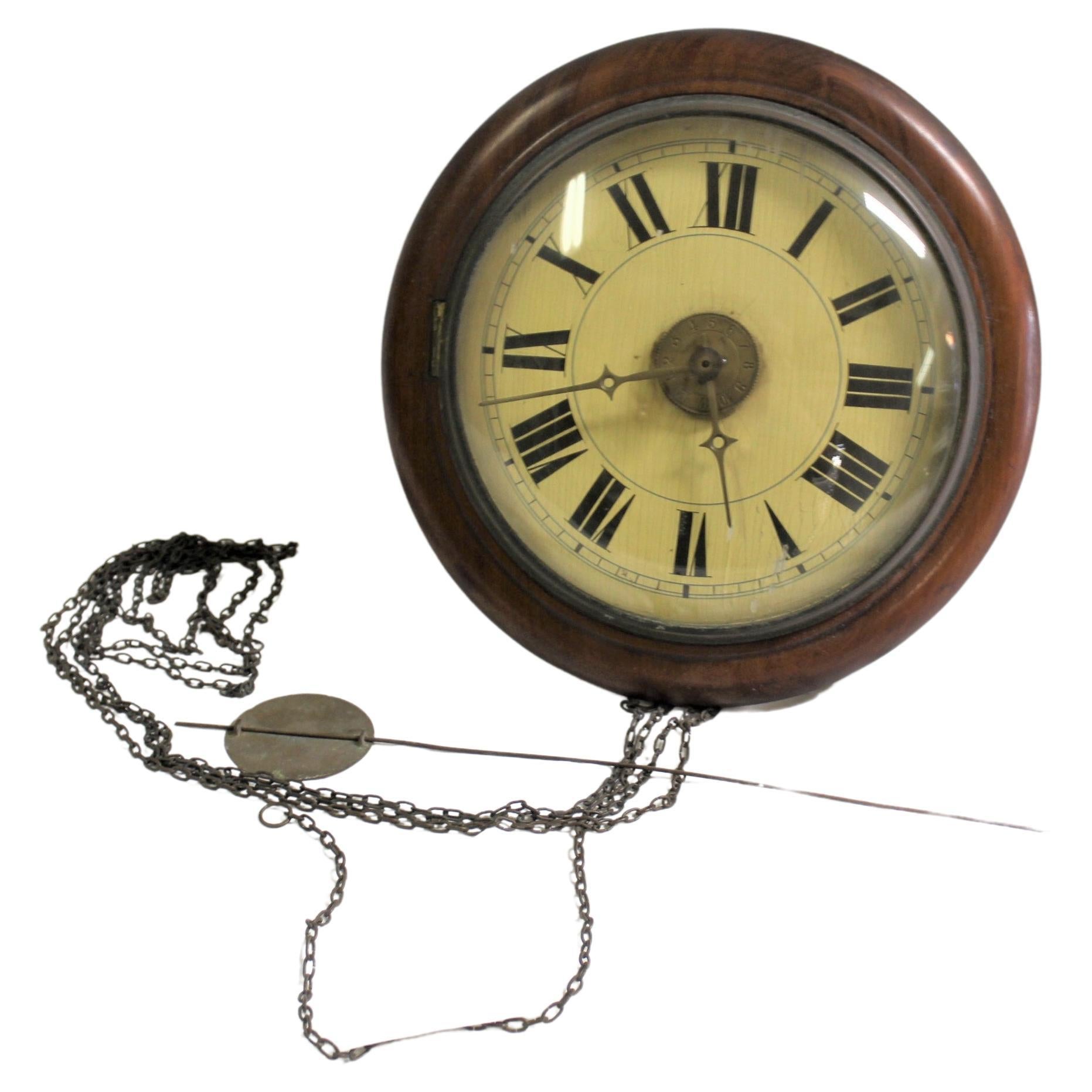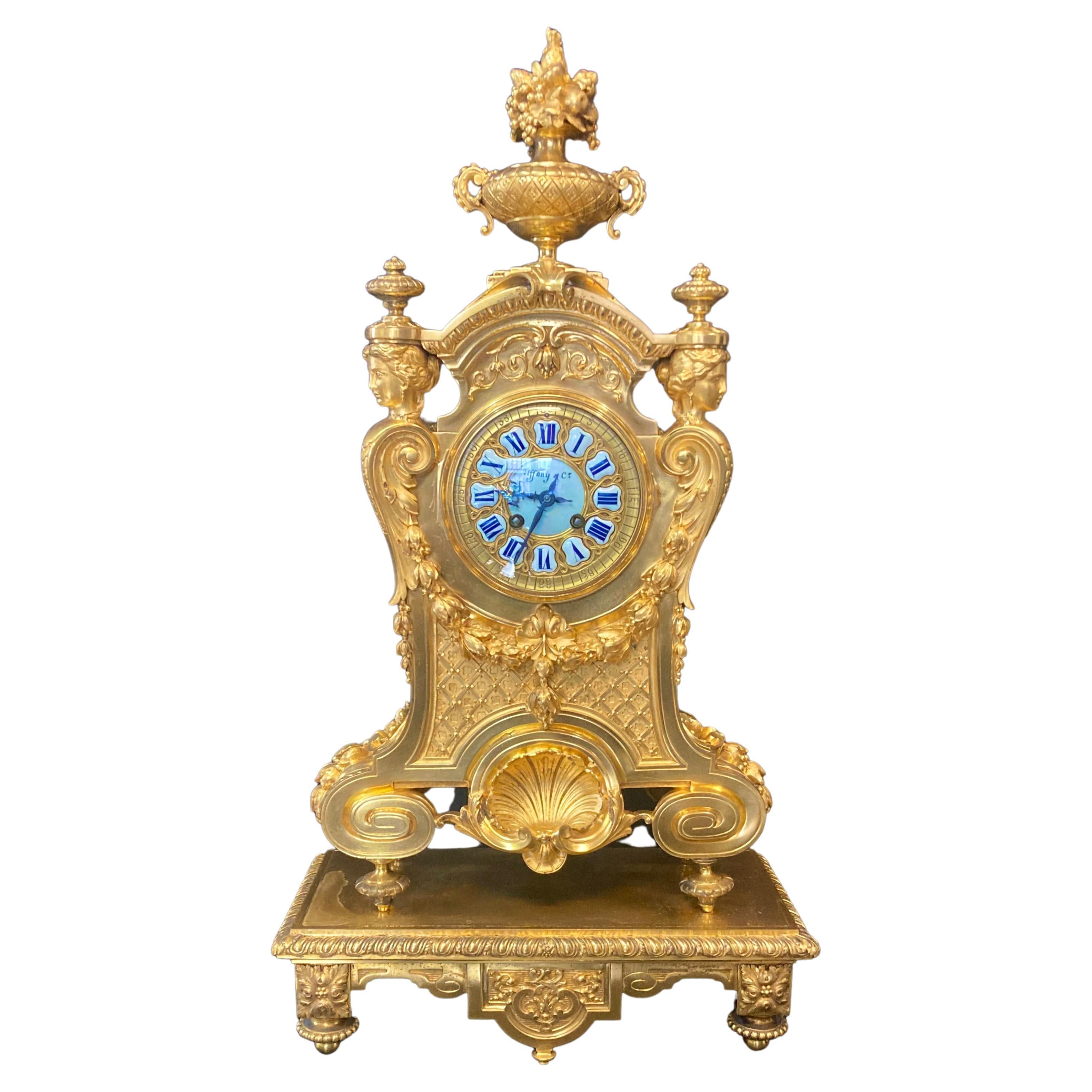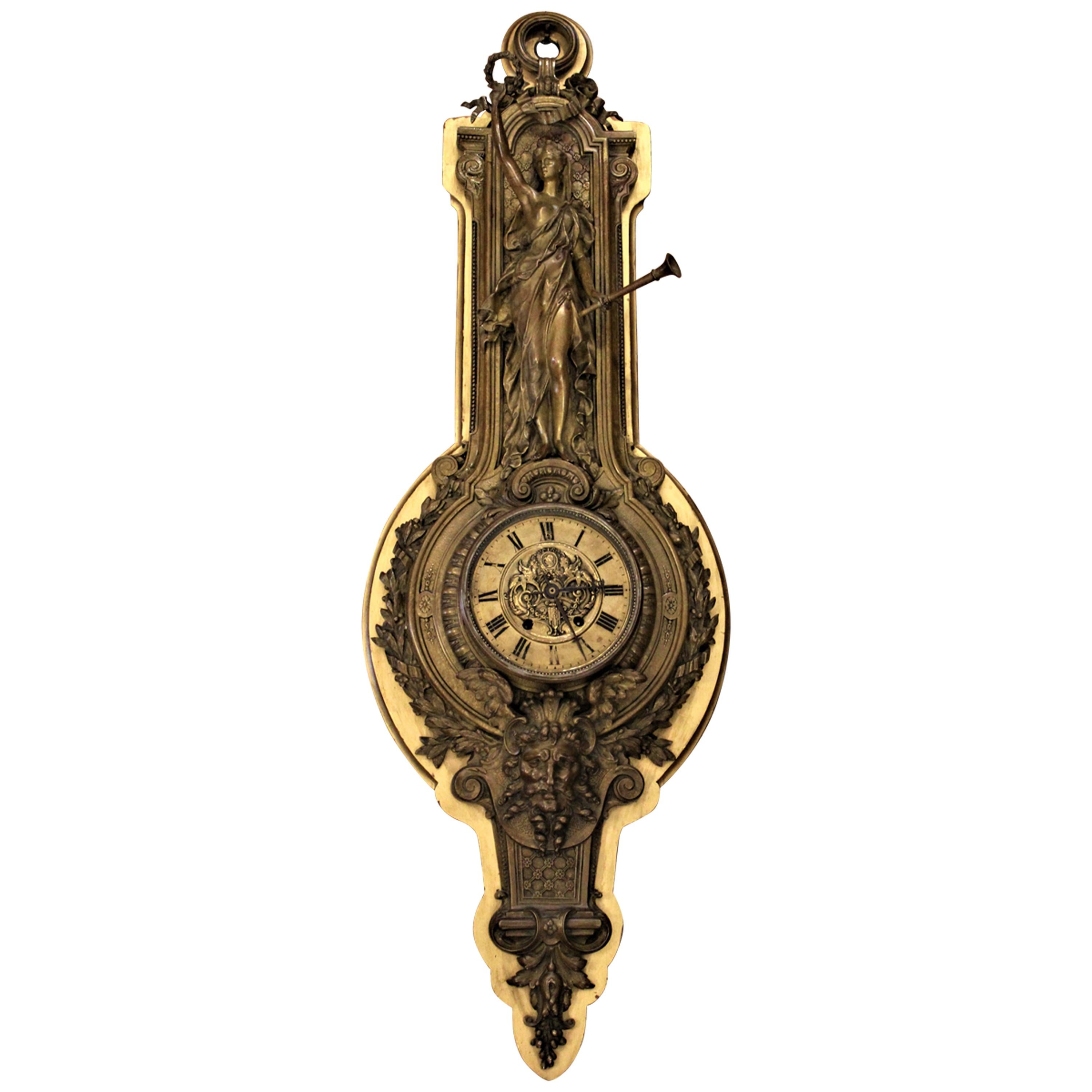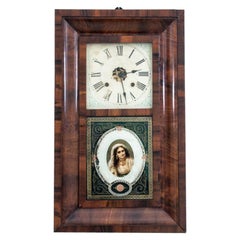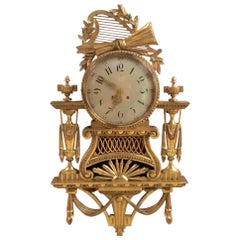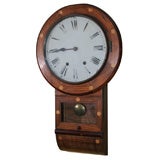
Jerome & Co. Inlaid Wood Wall Clock
View Similar Items
1 of 7
Jerome & Co. Inlaid Wood Wall Clock
About the Item
- Dimensions:Height: 28 in (71.12 cm)Width: 17 in (43.18 cm)
- Materials and Techniques:
- Place of Origin:
- Period:
- Date of Manufacture:3rd Quarter 19th-Century
- Condition:Very good.
- Seller Location:New York, NY
- Reference Number:1stDibs: 0907238422197
You May Also Like
- Antique Wall Clock, Ansonia Clock Co.By Ansonia Clock CompanyLocated in Chorzów, PLAntique clock from the end of the 19th century. Dimensions: H 65 cm / W 39 cm / D 11 cm.Category
Antique Late 19th Century American Other Wall Clocks
MaterialsWalnut
$698 Sale Price20% Off - Large Gilt Wood Cartel Wall ClockLocated in Norwich, GBGilt wood cartel clock. Painted dial with Roman numerals and pierced gilt hands. Giltwood case with swag decoration, turned finials, surmounted by a harp with starburst dec...Category
Antique 19th Century German Victorian Wall Clocks
MaterialsGiltwood
- English Inlaid Grandfather ClockLocated in Wilson, NCThis clock is profusely inlaid with rosewood ,ebony, satinwood, and boxwood. The bonnet has two inlaid shell pateries. The center door has a classical urn inlay...Category
Antique 1790s English Grandfather Clocks and Longcase Clocks
MaterialsBrass, Steel
$6,500 Sale Price33% Off - Stunning Maple & Co Paris Art Nouveau Hardwood Marquetry Inlaid Mantle ClockBy Maple & Co.Located in GBWimbledon-Furniture Wimbledon-Furniture is delighted to offer for sale this lovely, circa 1890 Maple & Co Art Nouveau mahogany inlaid mantle clock A very good looking and decor...Category
Antique 1890s French Art Nouveau Carriage Clocks and Travel Clocks
MaterialsHardwood
- Mid-Century Modern Mixed Wood Wall ClockLocated in Brooklyn, NYMid-Century American Modern wall clock composed of teak, English oak, walnut, and rosewood banding. Battery operational (mechanism was converted in the last ten years). Fully functio...Category
Vintage 1970s American Mid-Century Modern Wall Clocks
MaterialsOak, Rosewood, Teak, Walnut
- Rare Self Winding Clock Co Naval Observatory Time Western Union Wall Clock 26"By Self Winding Clock Co.Located in Dayton, OHAntique Western Union, Naval Observatory Time, self winding clock. Features a tall wooden case with carved corners and pediment mounted with tin sign reading "Naval Observatory Time Hourly By Western Union. White metal face with black Roman numerals and hands. Interior of case labeled "Property of Self-Winging Clock Co New York" and serial number on metal tag as well as on works. F Style / Vibrator movement, Serial Number 92630 (likely manufactured before 1917). Patented Oct. 4, 1898 by the Self Winding Clock Company. Fitted with Archer AC Adapter. "The Self Winding Clock Company (SWCC) of New York began business in 1886 marketing their own electro-mechanical clocks based on the 1884 electro-mechanical clock patent of one of the company founders, Chester Pond (1844-1912). The innovative principle of this clock mechanism was the incorporation of a small electric winding motor that automatically rewound the mainspring after the clock ran for one hour. The clocks were powered by batteries. The batteries would last at least one year. By being automatically rewound each hour, the strain on the mechanism was kept to a minimum, resulting in a very accurate timepiece. At about the same time SWCC began selling clocks, Pond was developing an electro-mechanical synchronizer attached to the clock movement that could synchronize the clock hands to an accurate time source. The synchronization occurs when a remote, precisely timed, electrical impulse is sent via wires connected to the individual clocks. By 1887 the synchronizers had been so improved that the Self Winding Clock Company could not only market individual clocks but also sell entire synchronized clock systems. By the 1960’s the days of individual elegant mechanical timepieces and synchronized time systems were over. SWCC ceased operations in the late 1960’s. All company records and inventories were relegated to the trash pile. The STYLE “F”, or as commonly referred to, the VIBRATOR movement was developed by Frederick M. Schmidt in the late 1890’s. By 1898 the “F” movement was being installed in almost all SWCC clocks. The movement has a Graham dead beat escapement. The “F” movement incorporates both the time train and winding motor in one set of plates. The motor used a single pair of coils. It was more reliable and easier to service than the rotary movement. The mainspring is re-wound after running for one hour. The vibrating armature oscillates up and down carrying a winding lever with a pawl that turns the winding wheel. The “F” movement was used in individual clocks and in clocks that were part of synchronized systems. It was made in 60, 80,120 and 140 beat versions. There were virtually no changes to the movement in 60 plus years the movement was in production. Almost all Style “F” movements wound on 3 volts DC. Style “F” movement serial numbers started in the 33,000’s and the first movements were probably made in 1898. The earliest plates had patent dates of 1891, 1892 & 1898. Serial numbers with these patent dates go up to the 63,000’s and were made before 1908. By 1908 the plates only had the 1898 patent date. By using catalog images of movement serial numbers it can be concluded that movements with serial numbers up to 112,000 were made in or before 1917. Movements with serial numbers up to 196,000’s were made in or before 1929. The single patent date serial numbers go as high as 220,000’s. Then there appears to be a large numbering gap. Finally, movements appear with no patent dates and serial numbers with the prefix FR. These numbers start at 300,000 but only continue to about 302,000. Start again at 400,000 and continue to about 402,000. Based on the large serial number gaps, the total number of “F” movements manufactured is probably around 200,000. They were manufactured between 1898 and possibly as late as the 1950’s. SWCC both sold clocks to and partnered with their biggest customer, Western Union in a nationwide distribution of precisely accurate “Naval Observatory Time” clocks. These either 120 or 140 beat Naval Observatory clocks...Category
Early 20th Century Late Victorian Wall Clocks
MaterialsMetal
Recently Viewed
View AllMore Ways To Browse
American Antique Wall Clocks American Wall Clocks
Antique American Wall Clock Wall Clocks
Antique American Wall Clocks
American Wall Clock Antique Clocks
Antique American Wall Clocks Wall Clocks
Antique Clocks Usa
Wall Clocks Made In Usa
Antique Factory Wall Clocks
New Haven Clock
New Haven Antique Clock
Antique New Haven Clock
New Haven Antique Clocks
New Haven Clock Co
Antique Clocks New Haven Clock Co
Signed Clock
Operating Room
Clock Faces
Clock Face

